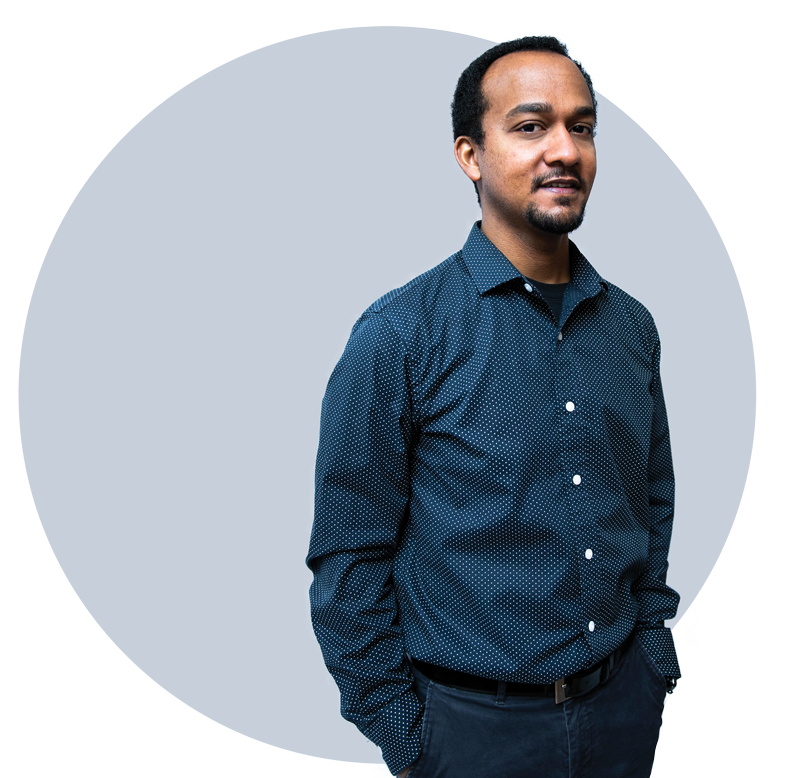Kwabena Bediako works with extremely thin materials, exploiting their unique properties to address fundamental problems in energy conversion and conservation.
At the heart of energy conversion and conservation technologies are electrified interfaces — being able to efficiently drive a charge along an interface, from a solid, into an electrolyte, is what ultimately determines how efficiently energy is stored.
“Now, if you can control the physics of the solid, if you can control how the electrons interact with each other and with ions, that can strongly impact this interfacial charge transfer,” explains Bediako, a CIFAR Azrieli Global Scholar in the Quantum Materials program and an assistant professor at the University of California, Berkeley.
“I got really driven to find a better solution to storing solar energy.”
That is where quantum materials come in. These solids or crystals are so thin, their properties are radically and unusually different from what one would find in three-dimensional materials. Learning to control the physics — their constituent atoms, electrons and other particles — and how they interact together in these very thin materials, could lead to designing more efficient energy conversion and conservation technologies.
But that is just one of the energy problems Bediako is looking to solve through quantum materials. He is also looking to address the accelerating energy consumption of electronic devices.
“If you consider all our communication technology, our portable electronic devices, all those data centres, all the information that we send back and forth — that already generates about as much carbon dioxide as the aviation industry,” explains Bediako. “And this was pre-COVID. This is before we learned that, hey, we could have all our meetings and events over Zoom and stream everything from home.”
He is looking at how to synthesize materials with interesting physical properties that could lead to lower-power electronic devices and more energy-efficient computing.
“One of our projects in the group is to explore how some of the unique physical properties of materials like graphene and other atomically thin layers might help us to design new catalysts for fuel cells or electrolyzers,” says Bediako.
Born and raised in Ghana, West Africa, Bediako went to the U.S. for university. He had initially aspired to be an aeronautical engineer, but, motivated by articles on the imminent climate crisis, he started to pursue chemical engineering before deciding on chemistry.
“I got really driven to find a better solution to storing solar energy.”
He hopes to foster that drive in his trainees as well. “The primary impact I hope to see in the next five to 10 years is seeing my students and postdocs develop successful careers of their own, in whatever industry or field that might be. As educators, our best product is the people we mentor and train. The science that we do, who knows what it inspires in the future. I hope we can learn some new lessons about how to control electronic interactions and chemistry in materials, and if we can do that, I am confident it will lead to some really impactful technology as well.”
Related Articles
-
CIFAR signs San Francisco Declaration on Research Assessment
December 09, 2024
-
Graham Taylor, Vector Institute: Using AI to track insect biodiversity loss in real time
November 29, 2024
-
Ross Mitchell, Amii: AI note-taking for doctors
November 16, 2024
-
Data Communities for Inclusion: Recentering technology in the knowledge and well-being of the collective
November 14, 2024
